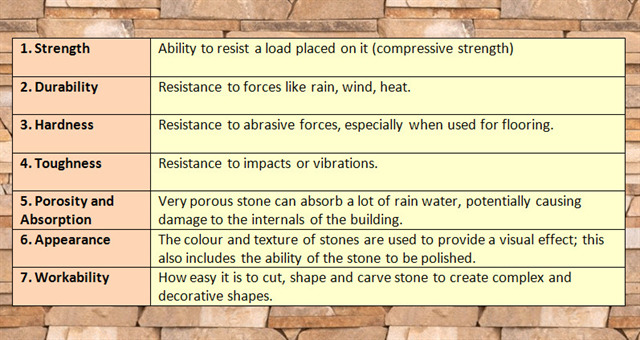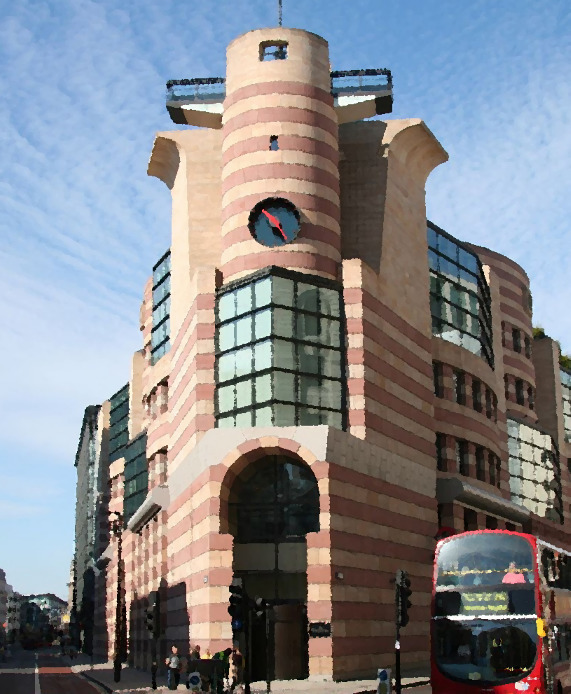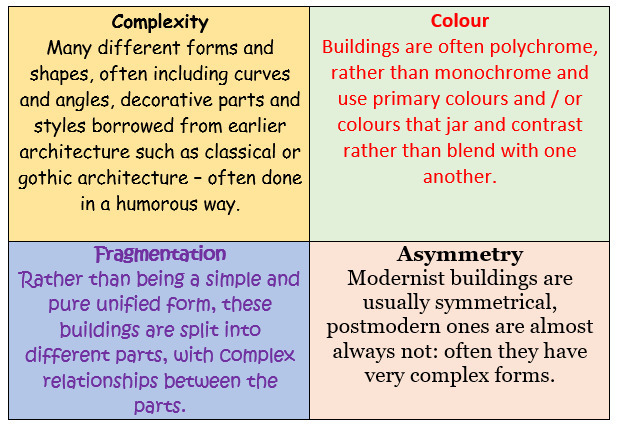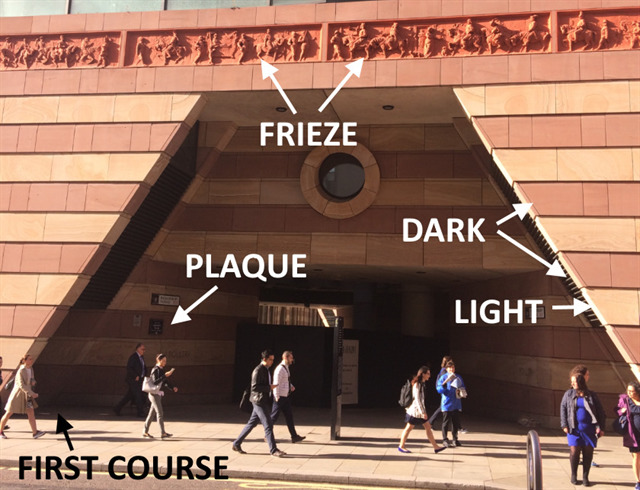The co-ordinates take you to the Number 1 Poultry building in London, on a narrow triangular site at the junction of Poultry and Queen Victoria Street, just a short distance from the Bank of England and easily accessible from Bank tube-station.
Geology of building stones
Architects and builders have three basic types of rock to choose from when constructing a new building:
Sedimentary rocks: these are formed from compacted and cemented loose sediment (silt, sand, pebbles) and include sandstone, arkose, shale and conglomerate. In some cases they are precipitated from the sea onto the sea bed e.g. limestone. Sedimentary rocks are usually easy to quarry, relatively cheap and easy to cut and shape. However, because they are relatively soft and often porous they are vulnerable to weathering i.e. being attacked by chemical, mechanical and biological forces and degrading.
Igneous rocks: these are formed from magma or lava that has cooled and solidified, forming a rock consisting of interlocking crystals. They can by fine textured (basalt) or coarse textured (granite, gabbro) or somewhere in between (andesite). Igneous rocks are resistant to weathering, usually non-porous and often highly decorative: their surface can take a good polish.
Metamorphic rocks: these are formed as a result of heat and / or pressure altering sedimentary rocks (and in some cases igneous rocks, and existing metamorphic rocks) to form a new rock, but without the original rock actually melting. Examples include slate, schist and gneiss. The impermeable nature of slate, and its foliation (property of splitting into thin sheets) make it ideal for roofing. Gneiss and schist have decorative properties and are sometimes used as facing stones on buildings.
Properties of building stone
Buildings, particularly commercial and public buildings, are often built using stone or at least faced or clad in it. Stone can be used in blocks as dimension stone which bears a load, or just as a non-load bearing facing. Stone can also be carved into ornate shapes. Some geological properties of good building stone include: 
Number 1 Poultry

This unusual building was completed in 1997. It was designed by architect James Stirling, and completed five years after his death in 1992. Stirling designed a number of buildings including the Neue Staatsgalerie in Stuttgart, Cambridge University’s Faculty of History and the Clore Gallery at Tate Britain.
From 1870 the site of Number 1 Poultry was occupied by the Mappin and Webb building. Mappin and Webb are the Crown Jewellers. From the late 1960s a number of plans were put forward for redevelopment of the site, but these were opposed: specifically a plan for a Mies van der Rohe office block in the modernist, or ‘international’ style. Eventually the current building was commissioned to replace the neo-gothic Mappin and Webb building in the 1990s. In 2016, Number 1 Poultry became a Grade II Listed Building making it one of the youngest Listed Buildings in the UK and one of only a few postmodern architecture buildings.
Postmodern Architecture
Number 1 Poultry is an unusual design, in the postmodern style. This style has its roots in the 1960s, as a reaction against modernism. Modernism uses the idea of ‘form follows function’ and many modernist building are plain, symmetrical, rectilinear and typified by the use of concrete and steel frames clad in glass.
Other postmodern buildings in London include the MI6 Building in Lambeth (Terry Farrell, 1994) and the Sainsbury Wing of the National Gallery (Robert Venturi, 1991).
Postmodern buildings are very varied but have a number of common design features:

Earthcache Questions
Number 1 Poultry is constructed using different geological materials, which help give it its polychrome appearance. Go to the co-ordinates and study the materials indicated on the image below, then answer the questions. You should be standing on the Poultry (north) side of the building under the arch.

1 Look at the very first course of stones that touches the pavement. This rock is a type of granite, a coarse textured igneous rock.
1a Describe the colours of the minerals that make up the granite.
1b Explain why you think granite was used for the very lowest course of stones, rather than the sandstone used above.
2 The building is mainly clad in stripes of two types of sandstone, one of which is light in colour and the other dark. Sandstone is a sedimentary rock.
2a Describe the differences between the light and dark sandstones in terms of colour.
2b Which sandstone is coarser i.e. which has larger sand grains?
2c What property of the lighter sandstone makes it particularly decorative?
3 Look up, at the orange coloured terracotta frieze above the arch that has figures and animals on it.
3a What geological raw material was used to make the terracotta frieze?
4 Look under the arch for a dark-blue plaque on the left hand side.
4a What was on this site in the 11th-13th Centuries?
5 This is an optional task: feel free to take a photograph at GZ to add to your log.
You do not need to wait to log this earthcache, but you do need to send your answers to us using the Messaging Centre or by email. Logs that do not have accompanying answers, after a reasonable time period, will unfortunately be deleted.
Congratulations to lisboa_bruno on getting the FTF!